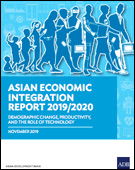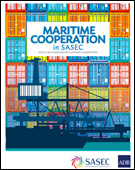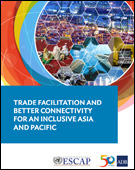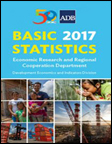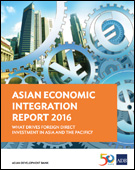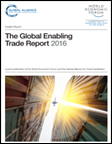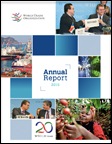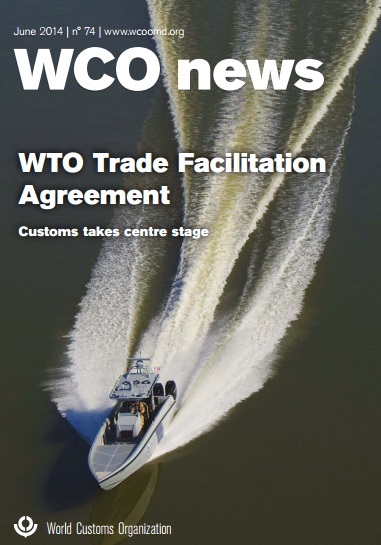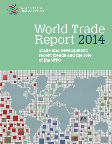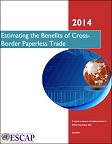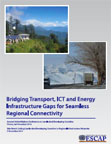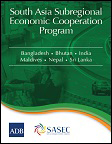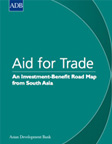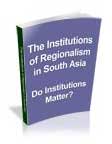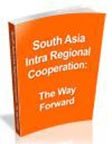Trade Facilitation Results
Trade facilitation focuses on removing barriers to the international movement of goods to lower trade costs, at and around the borders, and along the supply chain, to make countries more competitive in regional and global markets. In the SASEC subregion, bottlenecks in trade facilitation are the leading non-tariff barriers that constrain intraregional trade. SASEC initiatives in trade facilitation aims to make cross-border trade and transport in the subregion faster, cheaper, and more predictable, while maintaining the security of the supply chain and ensuring the effectiveness and efficiency of the institutions involved.
TRANSPORT SRI LANKA
REPORTS
total items: 19This report reviews economic cooperation and integration in Asia and the Pacific. It reports that in 2018, the South Asia Subregional Economic Cooperation (SASEC) focused on reducing gaps in multimodal connectivity among its member countries. By the end of 2018, 52 ADB-financed projects worth $11.36 billion had been committed to SASEC projects, with an additional $106.44 million in 81 technical assistance grants. SASEC nodal officials and working groups met in Singapore in March 2018 to update the SASEC operational plan. The operational plan identified 77 projects ($45.6 billion) to be financed by SASEC members, ADB, and development partners. A holistic approach under the operational plan will build transport links with Southeast Asia and East Asia and expand regional trade markets.
Source: Asian Development Bank
Most South Asia Subregional Economic Cooperation (SASEC) countries rely on maritime transport for international trade. Stronger maritime relations are crucial to achieve the economic growth potential for the subregion. This report looks at how countries can strengthen international trade by improving maritime cooperation among the SASEC countries, comprised of Bangladesh, Bhutan, India, Maldives, Myanmar, Nepal, and Sri Lanka. It gives an overview of the SASEC maritime sector and identifies collaboration initiatives that could address key challenges.
Source: Asian Development Bank
This report investigates the evolution of trade costs, examines trade facilitation and paperless trade implementation, and highlights key initiatives in South Asia, including efforts by members of the South Asia Subregional Economic Cooperation (SASEC). The SASEC Trade Facilitation and Transport Working Group agreed to expand assistance to trade facilitation through technical assistance to support more efficient, transparent, secure, and service-oriented processing of cross-border trade across South Asia. Through 2025, the SASEC connectivity agenda will be better aligned with the frameworks of South Asian Association for Regional Cooperation and the Bengal Initiative for Multi-Sectoral Technical and Economic Cooperation. To help establish a trade and transport facilitation monitoring mechanism, Bangladesh, Bhutan, and Nepal conducted studies that reviewed trade and transport procedures, analyzed bottlenecks, and gave recommendations on trade and transport facilitation.
Source: Asian Development Bank and United Nations Economic and Social Commission for Asia and the Pacific
Basic Statistics 2017 contains development indicators for 45 economies in the Asia and Pacific Region, including the seven SASEC countries, Bangladesh, Bhutan, India, Maldives, Myanmar, Nepal, and Sri Lanka. It includes selected indicators of the Sustainable Development Goals (SDGs) such as the proportion of population living below $1.90 (PPP) a day, proportion of population with access to electricity, renewable energy share in the total final energy consumption, unemployment rate, total official flows for infrastructure, and trade balance.
Source: Asian Development Bank
The 2016 Asian Economic Integration Report reviews regional economic cooperation and integration in Asia and the Pacific, amidst the rising global uncertainty following the United Kingdom’s referendum on leaving the European Union and the U.S. election, slower-than-expected global economic recovery, and ongoing economic restructuring in the People’s Republic of China and growth moderation. Asia faces heightened uncertainty–trade growth decelerated in 2015, falling to 2.3% in 2015; subregional trade linkages continue to strengthen, but inter-subregional trade linkages weakened; and non-tariff measures have become major obstacles to trade. In South Asia, SASEC cooperation has improved access to key markets in smaller economies, reduced real trade costs and behind-the-border barriers to stimulate investment; and enabled cross-border power exchanges to ensure power supply affordability, reliability, and overall grid stability. However, the SASEC agenda needs to be framed within wider integration processes taking place in Asia in the next decade to enhance economic linkages, and harness the full potential of Asian integration.
Source: Asian Development Bank
The Global Enabling Trade Report has been created to provide insight into trade policy and practice. It includes the Enabling Trade Index (ETI), which assesses the extent to which economies have in place institutions, policies, infrastructures and services facilitating the free flow of goods over borders and to their destination. This edition highlights that while an increasingly globalized trading system has been lifting millions out of poverty, trade barriers and costs are still preventing millions of people around the world from engaging in international trade. It reports that all South Asian economies have improved their ETI score over the past two years, with Bhutan as the most improved country in the region, jumping 12 places to 92, followed by India at 102, Sri Lanka at 103, Nepal at 108, Pakistan at 122, and Bangladesh at 123, yet the region remains the most closed worldwide. While South Asia has improved its access to foreign markets and adoption of ICTs, it needs to improve access to its domestic market – on average, South Asian countries impose a tariff of 16.7% on imported products – and enhance its transport infrastructure, particularly in Bhutan and Nepal.
Source: Global Alliance for Trade Facilitation and the World Economic Forum
The World Trade Organization (WTO) Annual Report 2015 provides an overview of WTO activities in 2014 and early 2015. It presents a timeline of two decades of the WTO -- from its origins succeeding the General Agreement on Tariffs and Trade to its current role in the multilateral trading system. It presents a chapter on how WTO helps developing countries build trade capacity and allows them to implement trade agreements. WTO training courses are organized for officials from developing countries each year.
Source: World Trade Organization
WCO News is a biannual newsletter of the World Customs Organization (WCO). This issue, released in June 2014, focuses on the World Trade Organization's (WTO) Agreement on Trade Facilitation. WCO's commitment to its implementation is highlighted and linkages between articles of the Agreement and WCO instruments and tools are explored. Also included is a feature on the benefits Authorized Economic Operator programmes bring supply chain companies.
Source: World Customs Organization
This annual publication highlights the relationship between trade and development, including changes since the start of the millennium. It identifies four key trends that altered the way trade affects development outcomes – accelerated economic growth in developing countries, expansion of global value chains, increase in agricultural and natural resource prices, and global nature of macroeconomic shocks. This report also explores how these trends have reshaped the role of trade in facilitating development and how recent development gains allow developing countries to adapt and mitigate risks.
Source: World Trade Organization
Cross-border paperless trade is trade that occurs on the basis of electronic communications and has been part of customs reform efforts in a variety of countries. Increased implementation of cross-border paperless trade is high on the trade facilitation agenda in Asia-Pacific. This report considers six measures to calculate estimates of possible economic benefits of cross-border paperless trade through counterfactual simulations using 2013 data and simple econometric models. Simulation results reveal that this new generation of trade facilitation can significantly reduce trade costs and boost intra- and extra-regional trade in the region. Partial implementation of these measures can lead to an export increase of $36 billion annually. Total direct cost savings across all trade is about $1 billion per annum for partial reform, and $7 billion for full implementation.
Source: United Nations Economic and Social Commission for Asia and the Pacific
This publication is a contribution by the United Nations Economic and Social Commission for Asia and the Pacific to deliberations at the Second United Nations Conference on Landlocked Developing Countries (LLDCs) in Vienna, Austria, 3-5 November 2014. It shows regional connectivity as an unfinished agenda and bridging infrastructure gaps as a complex challenge for LLDCs. While physical infrastructure is a priority, this report argues that deeper regional integration – through regionally cohesive and terrestrial networks – is key to effectively linking Asian LLDCs to the region’s infrastructure networks.
Source: United Nations Economic and Social Commission for Asia and the Pacific
This promotional brochure is a concise introduction to the South Asia Subregional Economic Cooperation (SASEC) Program, highlighting the main areas of regional cooperation and activity. It includes facts and figures about SASEC projects in transport, trade facilitation, energy, and ICT.
Source: Asian Development Bank
Aid for Trade (AfT) came to prominence just over a decade ago at the launch of the World Trade Organization's Doha Round. With its focus on helping least developed countries and economies escape the poverty trap, it aims to strengthen their capabilities to meet market demand and to reduce supply-side constraints such as a lack of trade infrastructure.
Source: Asian Development Bank
ADB's third Regional Cooperation Operations Business Plan (RCOBP) 2014-2016 for South Asia under its South Asia Regional Cooperation Strategy (RCS) 2011-2015 details a cumulative indicative lending program of $3.3 billion and maintains focus on improved regional connectivity, increased cross-border trade, and strengthened regional economic cooperation.
Source: Asian Development Bank
This paper assesses the contribution of key institutions of regional cooperation and integration (RCI) in South Asia, and suggests ways in which the Asian Development Bank and other development partners can strengthen their support. It attempts to enhance understanding on the interplay between politics and RCI, including how good bilateral political relations or improvements have advanced RCI. With the overall political environment growing increasingly open to RCI, the paper suggests the time has come for the South Asian Association for Regional Cooperation (SAARC) to consider strengthening the capacity of the SAARC Secretariat to meet the growing challenges and work load of managing the anticipated increase in RCI.
Source: Prabhu Ghate
This study aims to showcase the benefits of regional integration and recommends strategies for overcoming the many hurdles.
Source: Shahid Kardar
Sector roadmaps with result frameworks for transport, energy, and trade facilitation.
Source: Asian Development Bank
This paper examines the benefits of regional cooperation and integration, focusing on the cost of neglecting to address the binding constraints to regional cooperation and integration. Component papers in this volume analyze the current state of play, and identifies the binding constraints to achieving more efficient transport corridors, regional energy trade and trade facilitation in the region.
Source: Gilberto M. Llanto
This report reviews the provision of high priority regional public goods (RPGs) selected for the South Asia subregion, and proposes areas of cooperation for improving the provisioning of RPGs in South Asia. It highlights the issues in cross border management of infrastructure projects and best practices in the provisioning of RPGs relevant for South Asia, evaluates ADB’s contributions to providing RPGs in the subregion, and concludes with recommendations on ADB’s South Asia Regional Department’s role in the provision of RPGs in the subregion.
Source: Khaja Moinuddin

